Top Dogs & Cool Cats
Meet these five passionate practitoners who have dedicated their careers to bettering the health and well-being of animals in a variety of ways, from animal rescue and field work to philanthropy, mentoring and inventing.
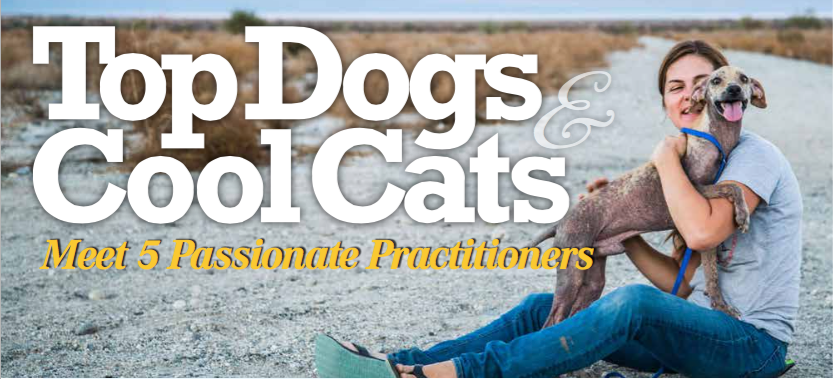
Veterinarians are easy to love. Animal lovers, entrepreneurs, teachers, and detectives, veterinarians have a rare combination of proficiencies, deftly fusing technical know-how, problem-solving skills, compassion and business acumen to build thriving practices. Their wide-ranging skills also lend themselves to success in a host of professions that don’t involve working in a veterinary hospital. The professionals we highlight in this issue are drivers and doers. They have dedicated their careers — and often their entire lives — to bettering the health and well-being of animals in a variety of ways, from animal rescue and field work (animaltarianism) to philanthropy, mentoring and inventing. Meet the fascinating veterinarians who inspire us.
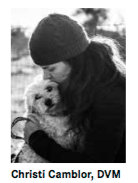
When she started Compassion Without Borders (CWOB) after a serendipitous trip to Mexico in 2001, Christi Camblor, DVM, wanted one thing: a better future for needy animals in Mexico.
“I saw how dire the situation was for sick, injured, homeless and neglected dogs in Mexico,” Dr. Camblor recalls, “and I became inspired to do all I could to help.” CWOB has since arranged transport for more than 2,000 dogs from the region.
Today, Dr. Camblor’s work extends well beyond the border. The nonprofit organization’s mission is to help animals that are seemingly doomed due to geographic, cultural, and socioeconomic barriers. To date, CWOB has impacted the lives of more than 26,000 dogs and cats through four unique programs that direct rescue, spay/neuter and veterinary care clinics, and pet wellness education in underserved areas in Mexico and the United States.
“One of our main goals is rescue of at-risk animals from low-resource areas to higher-resource areas where there is a shortage of adoptable dogs,” says Dr. Camblor. To that end, every other month CWOB transports about 40 Chihuahuas from shelters in California’s poverty-stricken Central Valley to Minneapolis, Minnesota, where they can find forever homes due to the region’s shortage of small dogs.
When asked why CWOB concentrates so much effort helping animals outside the United States, Dr. Camblor says, “Their suffering knows no borders and neither does our compassion. It’s as simple as that.”
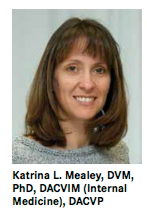
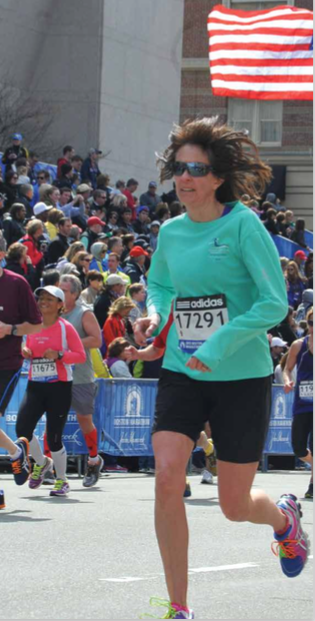
Katrina L. Mealey, DVM, PhD, DACVIM (Internal Medicine), DACVP Citing her “highly prolific spirit of innovation,” Katrina L. Mealey, DVM, PhD, DACVIM (Internal Medicine), DACVP, was elected last year as a fellow of the National Academy of Inventors. She earned this honor because of her expertise and standard-altering research in veterinary pharmacogenetics. In 2001, Dr. Mealey discovered a potentially fatal deletion mutation of the multidrug resistance gene MDR1. She subsequently invented a genetic test for the mutation and created a program at Washington State University (WSU) College of Veterinary Medicine to test animals for the mutation and to identify genetic predisposition to other adverse drug reactions in dogs and cats.
The test, patented by WSU in 2004, has prevented dogs with the MDR1 mutation around the world from suffering potentially fatal toxicity to common drugs, including some parasiticides, antineoplastic drugs and the antidiarrheal loperamide. The mutation is common among such herding breeds as border collies, shelties and Old English sheepdogs.
Dr. Mealey joins 756 other academy fellows with a recognition that is quite uncommon among veterinarians. She was inducted into the academy this month during the organization’s annual conference.
“While I am honored to be a fellow in the National Academy of Inventors, it is equally rewarding because this validates the impact of pharmacogenetics and precision medicine in the veterinary profession,” says Dr. Mealey. “It is rewarding to know that companion animal discoveries have made a large enough impact to be recognized by this prestigious organization. I hope to be able to help highlight other impactful veterinary discoveries.”
Dr. Mealey has nine national and international patents on the MDR1 test licensed on four continents. These patents have generated more than $1 million in royalties and licensing fees for WSU, where Dr. Mealey is a professor and the Richard L. Ott endowed chair in small animal medicine and research. She also serves as a founding entrepreneurial faculty ambassador.
In her eponymous lab at WSU, Dr. Mealey’s research continues to be aimed at preventing adverse drug reactions in animals. “Our research in veterinary pharmacogenetics has generated discoveries that are used globally to prevent adverse drug reactions in dogs (and are under development for cats),” she says.
When Dr. Mealey is not working in her lab, she enjoys running marathons and has completed 13 of them, including the 2013 Boston Marathon.
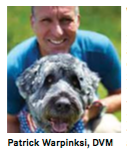
When Patrick Warpinksi, DVM, says that his practice is built on relationships with pet owners, his employees, and the community, he really means it. “It’s the relationships with your customers and employees — rather than profit — that truly drive growth,” he says. “If you treat your clients and staff with fairness, dignity and respect, the bottom line will take care of itself.” This philosophy has earned Dr. Warpinski and his clinic a host of accolades and awards from community and industry leaders over the years.

Founded in 2004 on the idea that excellent veterinary care should be accessible for all pet owners, The Animal House in Green Bay, Wisconsin, provides integrated care for every aspect of animal health, regardless of the owner’s income. With progressive and personalized services that include primary and specialty care, in-home euthanasia and other housecall services, and outstanding technological capabilities — not to mention day care, boarding, grooming and training — it’s no wonder the practice has been named “Best of the Bay” in four different categories for nine years running.
“We’ve received a lot recognition over the years,” says Dr. Warpinksi, “but the more rewarding aspects of owning a successful business are the ability to provide personal and professional growth for our employees and to support those in need throughout the community.”
The Animal House — under Dr. Warpinski’s direction — has more than proved its commitment to the local area. Dr. Warpinski and his team work with dozens of local pet rescue groups, shelters, students and area charities. Every year, the practice provides free or discounted veterinary care for more than 3,000 area pets.
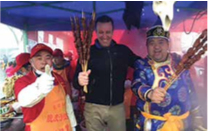
One charitable organization that benefits from Dr. Warpinski’s work is Paul’s Pantry, which feeds community members in need — and now also helps those community members care for their pets. “We approached Paul’s Pantry with our idea for a very low-cost veterinary program because we never want to see a family have to make a pet-owning decision based on their present, and often temporary, stage of distress,” he said. “Our goal is to help people in need keep their pets in their family.”
The Animal House devotes time and effort to providing a wide range of community support to children as well, from exhibiting a mini veterinary hospital in The Children’s Museum of Green Bay to sending low-income schoolchildren to an overnight YMCA camp that encourages character growth. The clinic has also supported the American Red Cross, St. John’s Homeless Shelter and Big Brothers Big Sisters, among many others.
The highlight of his career? Being one of 10 veteri- narians around the world selected to participate in the NOBIVAC Global Vet Exchange Program, which gives practitioners the chance to visit a foreign clinic to experience a different culture and learn how veterinary medicine is perceived and performed globally.
In February 2015, Dr. Warpinski flew to Beijing to complete the exchange with Dr. Yi (Eric) Dong at Dr. Dong’s three Puppytown Clinics. “The Beijing experience was so memorable on so many levels, from the language to the culture to the food and, of course, the veterinary medicine,” he said. “For me to experience a few days in the life of a Chinese veterinarian was nothing less than phenomenal. That trip will resonate for years to come.”
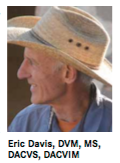
Eric Davis, DVM, MS, DACVS, DACVIM, has a singular goal: to promote the availability of veterinary care in poor, rural communities around the world. And, considering all he’s done to help others throughout his career, we’d say he is a high achiever.
Over the past 20 years, Dr. Davis has traveled countless miles to dozens of rural communities around the world to provide medical care for tens of thousands of animals and teach hundreds of veterinary students lessons they could never learn in the classroom.
The secrets to his success? Hard work, compassion, philanthropy and kindness.
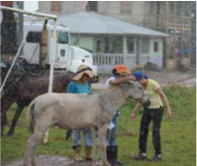
Dr. Davis’s first large-scale volunteer effort was a six-year stint with Remote Area Medical, which provides free medical care to people in far-flung areas around the world. At the time, Dr. Davis was also on the faculty at the University of Tennessee University College of Veterinary Medicine in Knoxville. To say that his passion for volunteering overtook his life is a bit of an understatement. Ultimately, Dr. Davis resigned from his position at the university to start his own volunteer organization.
He approached the Humane Society of the Unites States (HSUS) with an idea for starting a veterinary outreach program, and Rural Area Veterinary Services (RAVS) was born. Under Dr. Davis’s direction, RAVS volunteers launched projects in dozens of underserved rural communities in the United States and abroad, including operating emergency animal shelters in Louisiana after Hurricane Katrina and in Sri Lanka following the 2004 tsunami.
The RAVS program involved primarily small animals, but Dr. Davis’s background and first love is horses. “Horses have been my main interest all my life,” he says, “and I’m also sympathetic to the plight of working horses, mules, donkeys, and oxen, which still play such an important role in so many countries.”
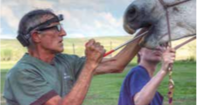
After 10 years, Dr. Davis left RAVS for the International Animal Welfare Training Institute (IAWTI) at the University of California, Davis. His role at IAWTI includes lecturing and training students on ethics, animal welfare, and large animal rescue; conducting research; and directing the Donkey Welfare Symposium, an annual forum for health care and training of “this most hard-working, cooperative, and yet often-maligned animal,” says Dr. Davis.
In 2011, Dr. Davis his wife Cindy Davis, RVT, a veterinary anesthetist, started a nonprofit organization called Rural Veterinary Experience, Teaching, and Service (RVETS). “I wanted to be able to continue working with students in the field and maintain projects in Central America and the reservations of the Dakotas,” Dr. Davis says.
The goals of RVETS are simple: to provide each patient with the absolute best care possible and each student with the absolute best learning experience and training possible. RVETS sojourns — the group travels about 12 weeks each year — are a “no-frills” experience, says Dr. Davis. “We sleep in the bus or camp out. The investment is in the supplies, equipment, and teaching materials that we need to do a good job.”
Dr. Davis never stops looking to the future for new ways he can help animals and students. Among the next stops on his journey? Improving the availability of veterinary care and upgrading the veterinary infrastructure in Nicaragua, make veterinary students in the United States and Mexico aware of the needs and rewards of mixed rural practice, and conducting equine research at home and abroad. Oh, and when he has time? “I want to train my horse in the traditional Vaquero way.”
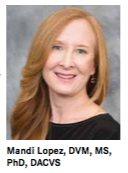
Veterinary surgeon Mandi Lopez, DVM, MS, PhD, DACVS, has made work easier for orthopedic surgeons everywhere. Her invention, the GraftGrab, is a bioabsorbable device that allows surgeons to affix tissue to bone while simultaneously adjusting tension during anterior cruciate ligament (ACL) graft procedures, reducing surgery time and improving patient outcomes.
Dr. Lopez, who is director of the Laboratory for Equine and Comparative Orthopedic Research in the Louisiana State University (LSU) School of Veterinary Medicine, says she and her colleague W. Todd Monroe, PhD, PE, initiated the design process almost 13 years ago while they were searching for ways to restore ruptured cranial cruciate ligament function in dogs with a graft created from tissues surrounding the joint.

“Loss of initial graft tension is a problem with soft tissue interference screws and can contribute to joint instability,” says Dr. Lopez. “The GraftGrab provides a simple mechanism for anchoring the graft immediately after tensioning that minimizes the likelihood of graft tension loss,” she says.
The biggest advantage of the GraftGrab, according to Dr. Lopez, is that the attachment can be adjusted so surgeons can try different tensions and decide on the one that is best for their patient. The device can also potentially be used in future bone and joint surgeries in both animals and humans. The GraftGrab and a “sister” device, the GrabTen, are currently licensed by Tesa Medical, Inc. and will be available commercially following completion of the Food and Drug Administration approval process.
Dr. Lopez has shared her research findings through hundreds of presentations and more than 75 original scientific publications. In addition to numerous awards for research excellence, Dr. Lopez’s work has also landed her a spot in the National Academy of Inventors (NAI). She was inducted as a fellow into the academy this month during the NAI’s annual conference. “Being nominated as a fellow in the NAI is beyond any accomplishment that I thought to achieve during my career. I’m incredibly humbled and genuinely grateful,” she says.
But Dr. Lopez doesn’t give herself all the credit for her success. Not by a long shot. “I plan to pay this incredible gift forward to other aspiring creators,” she says. So, when she isn’t working in the lab at LSU, Dr. Lopez mentors students at all career stages from high school level on up. She is also the associate editor for invited reviews and themed issues for Veterinary Surgery.
“I’m committed to this role because of the mentoring I received early in my writing experience when editors and reviewers provided me with extraordinary information that helped guide my research into clear communication,” she says. She decided to continue this process for scientific writers at all stages.
“I strive to support an efficient review process so that scientific progress is published in a timely manner,” Dr. Lopez said. “The work is something I genuinely enjoy, so I don’t mind having it be part of my daily activities.”
